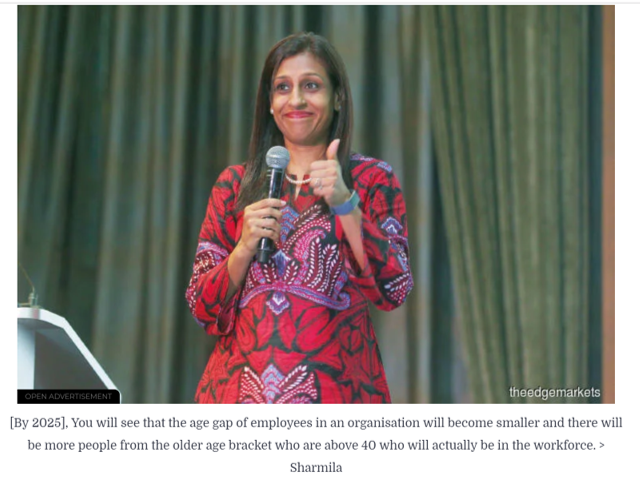Vanessa Gomes / The Edge Malaysia | July 20, 2019
This article first appeared in Personal Wealth, The Edge Malaysia Weekly, on July 8, 2019 – July 14, 2019.
More retirees are looking to rejoin the workforce in various capacities due to factors such as having insufficient savings as a result of the increased cost of living as well as to keep themselves occupied and relevant, Hire.Seniors co-founder Sharmila Sinnathurai told participants at The Edge Third Age Economy Symposium 2019.
“Some retirees we spoke to said they had been looking forward to retirement. But after taking a year off and [doing various things like] travelling, remodelling the house, seeing their children get married, taking care of their grandchildren … they became bored and wanted to do something else.
“Another group told us that they could not afford to retire but were forced to do so because they had reached retirement age,” she said, adding that most of the seniors she had spoken to were eager to try a job that was different from what they had been previously doing for 30 to 40 years.
Sharmila decided to co-found Hire.Seniors, a post-retirement job specialist platform, when she realised that there was no such service dedicated to retirees.
Through her years of working in human resources and recruitment, she discovered that a lot of organisations sought to hire good talent but could not find them. This inadvertently impacted their business as many roles could not be filled.
“So, that’s when we (Sharmila and co-founder Jasmin Amirul Ghani) got together and realised that on the one hand, we have corporations that want good talent but could not find them.
“And on the other hand, we have a group of wonderfully experienced people who have retired but want to contribute to society and whose skills are not being tapped into. So, we thought, why not bring them together and that’s how we created Hire.Seniors.”
Currently, the youngest job seeker on the platform is 48 years old while the oldest is 72.
The platform categorises candidates based on their job skills — specialists, semi-skilled and generalists.
During her talk, titled “The Silver Talent: Our Nation’s Untapped Potential”, Sharmila pointed out that in the mid-1980s, a large portion of the workforce comprised younger people and as they aged, the number of older people in organisations have become smaller. However, this trend is set to change by 2025.
“You will see that the age gap of employees in an organisation will become smaller and there will be more people from the older age bracket who are above 40 who will actually be in the workforce,” she said.
“Another thing we’re seeing is that the composition of the workforce is going to change. Organisations have also realised that they aren’t able to accommodate a workforce where 95% of the people are full-time or internal employees.
“[By 2025], perhaps 60% of the workforce would be made up of internal staff while 40% would be external workforce. When they say external, it means that they are going to identify the right skills and the right person for the right job at the right time,” Sharmila explained.
“This is where organisations are going to start looking for individuals who can come in to do a particular piece of work, contribute their expertise and move on.”
Based on the results of a pulse survey she did in 2017 with 85 companies, 66% of them were open to hiring seniors. However, they were concerned about the assimilation of retirees into the workforce.
Sharmila said there are benefits for employers when it comes to hiring seniors, one of which is the latter’s experience. There have been a lot of requests for seniors with relationship skills, she pointed out.
“Businesses are beginning to see the value seniors can bring when selling products and services, especially in areas that are senior-related.
“How many of us would accept food samples in a grocery shop from someone in their sixties compared with someone in their twenties? Asians are generally less likely to say no to seniors.”
One concern raised by companies is that graduates may have less employment opportunities if seniors were allowed to return to work but Sharmila said that is not the case. “Companies should look at the areas in their organisation where they need the expertise but have not been able to get the right talent. Seniors can be an alternative pool of talent to fulfil those needs,” she explained.
“It’s a contingency workforce. For example, an accounting firm with a backlog of tax and audit jobs could hire a group of seniors with the relevant experience to help it for two to three months.”
Another benefit of employing seniors is that the hiring process would be much shorter. “A senior is probably available to start work the next day and can attend interviews in the afternoon, so the hiring cycle becomes shorter. That, in return, means that you are saving cost. You are getting value much earlier and helping the business grow,” she said.
